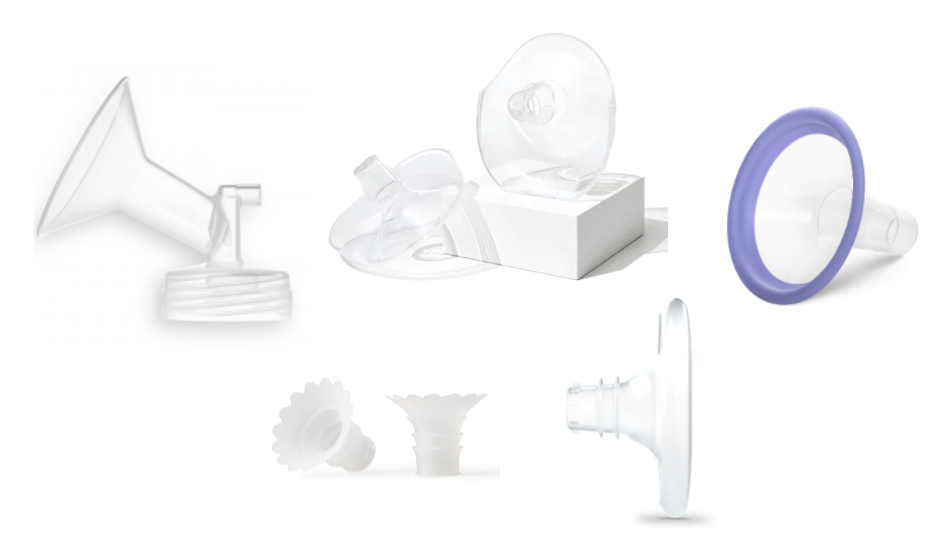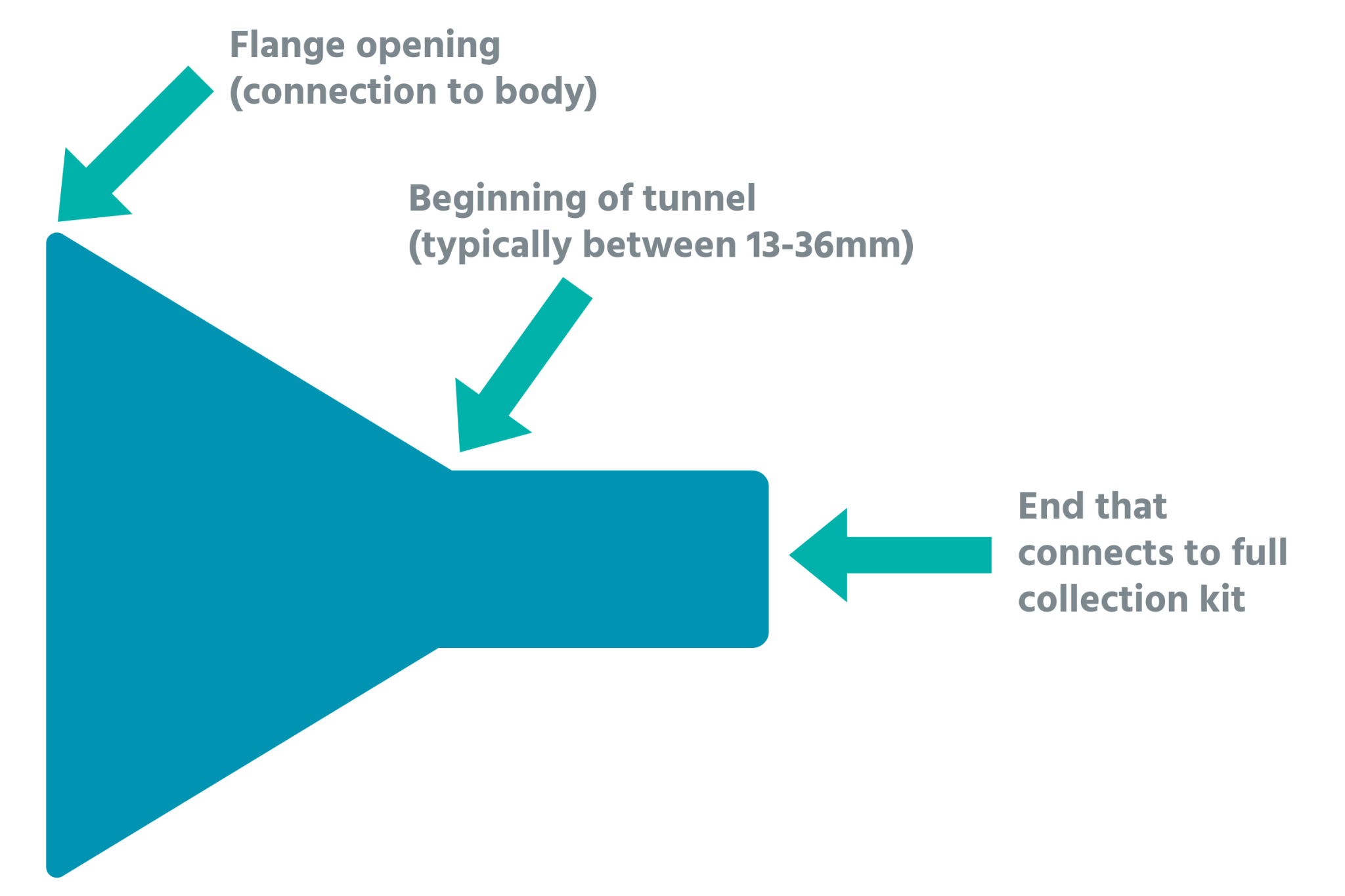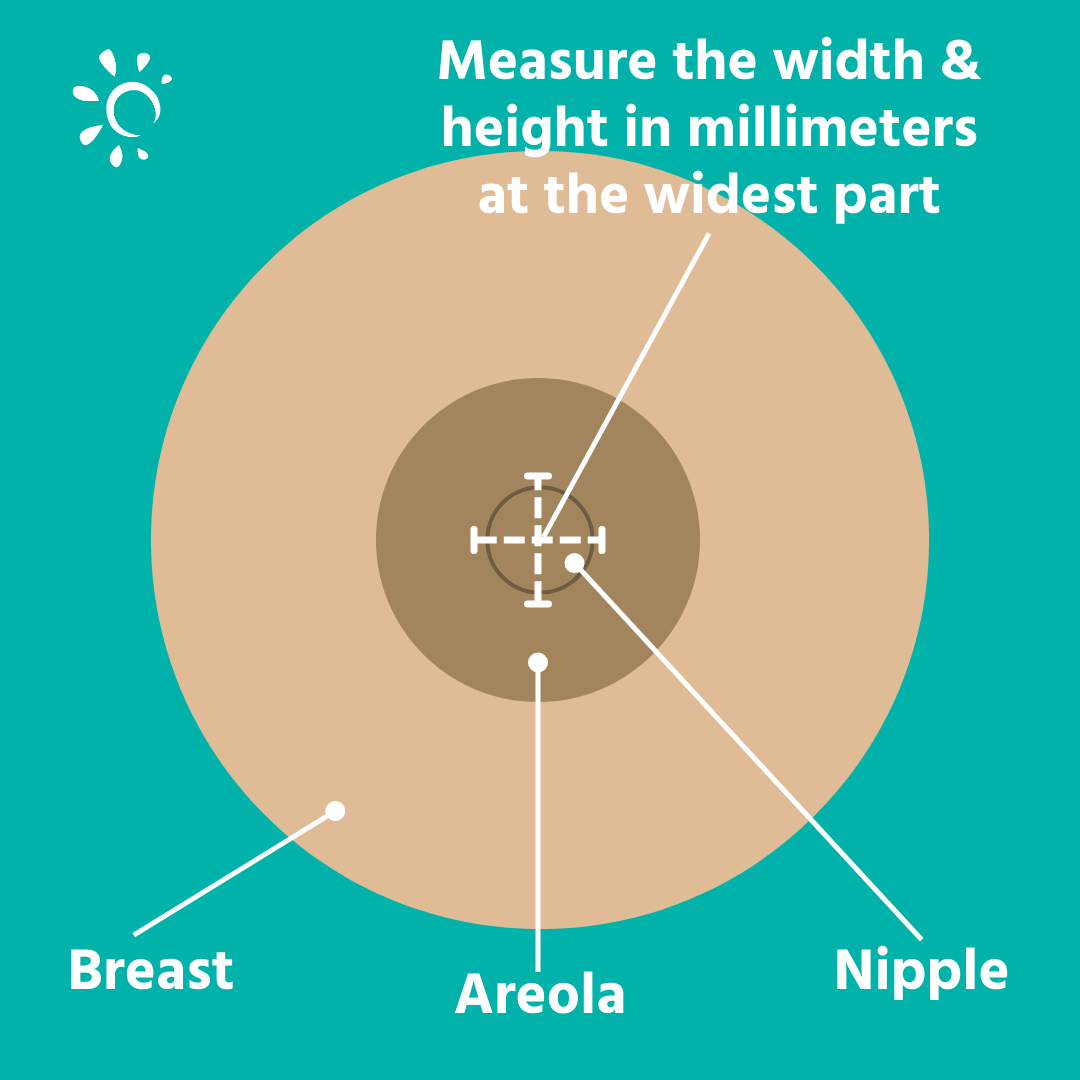Categories: Breastfeeding, Pumping
March 11, 2024
Finding the right size for your breast flange or shield will help you ensure appropriate milk output and have the most comfortable pumping sessions possible. Don’t know what size breast shield you need? Find out more below!

What is a flange?
A flange, or breast shield, is the cone shaped funnel that fits directly over your nipple, areola, and breast. When using the correct size, it forms a seal between your breast and the plastic or silicone, which then creates a vacuum to extract milk.
Many manufacturers will also make smaller inserts or cushions that go within an existing breast shield size. These reduce the opening of the tunnel where the nipple enters. They are often less expensive than a full flange or breast shield.
Why size matters
Using the correct size flange or breast shield will help optimize milk output. If a flange is too small, it could restrict the tissue, potentially causing clogged milk ducts. If the flange is too large, it may not remove all the milk, which could contribute to a lower milk supply. Using an ill-fitting flange can also cause nipple pain or injury.
Flange sizes range from about 13mm up to about 36mm, depending on brand. That measurement has nothing to do with the opening of the flange, but is the size of the beginning of the flange tunnel. That is because breast shield size is about nipple size, not breast/chest size.

Breast pumps typically come with 1 or 2 sets of breast shields. They will most likely be around 21-28mm. These are a good place to start. In addition to the included size(s), some brands like Cimilre, have certain guarantees to help you get the size you need by offering you a third size option, free of charge! Outside of these guarantees, additional sizes typically require an out-of-pocket purchase or using a possible insurance benefit covering replacement parts.
How to measure your flange size
To determine the best flange size for you, you’ll need to measure your nipple. Take a tape measure or ruler and measure the diameter of your nipple in millimeters. We recommend measuring vertically (up and down) and horizontally (left to right) and using the larger of those 2 measurements. Do not include measurements for your areola, the larger part around your nipple. Many manufacturers make their own, printable, measuring tools!

Not just the numbers
The size of your nipple is not the only thing that matters. You also want to pay attention to what happens to your nipple once the pump is on and suction is applied to your body. Everyone’s body reacts differently- stretching longer vs wider. It is okay if your nipple touches the side of the flange tunnel, as long as it still moves easily and does not cause any friction, discomfort, or damage.
Once you have your nipple diameter, you select the next largest size flange offered by your pump manufacturer, closest to or even the same size as your nipple diameter.
Examples:
- Using a Cimilre S6, measuring 14mm. Next size is a 16mm flange.
- Using Elvie, measuring 16mm. Next size is the 17mm insert.
- Using a Lansinoh SmartPump 3.0, measuring 22mm. Next size is the 25mm flange.
- Using a Medela PIS MaxFlow, measuring 18mm. Next size is the 21mm flange.
- Using a Spectra S2, measuring 14mm. Next size is the 16mm.
- Using a Willow, measuring 19mm. You have a few options: Trying the 19mm or 21mm insert in the 24mm shield, or trying the 21mm or 24mm shield alone.
- Using a Zomee Z2, measuring 20mm. Start by trying the 21mm. You could also try the 24mm.
Keep in mind, breasts are not identical. Each breast/nipple may require a different size flange. In fact, your flange size may even change throughout your pumping journey. Before you replace your pump parts, it’s a good idea to remeasure to confirm you are still using the correct size.
If you feel the sizes offered by the manufacturer of your breast pump will not work for you, reach out to them and ask them what they suggest! Some manufacturers, like Lansinoh, recommend PumpinPals, while others are ok with you using any other flange or insert if they DO NOT offer the size you need. It is best to ask the manufacturer directly where to look because using off-brand replacement parts may undermine the warranty for your pump.
The proper fit
Signs of an incorrect fit:
- Significant pain while pumping
- Breast/chest/areolar/nipple discomfort between pumping sessions
- A delayed let-down (over 2-3 minutes)
- Recurrent plugged ducts, with other causes ruled out
Signs of a correct fit:
- The flange fits comfortably around your nipple
- Only your nipple and little to none of your areola enter the tunnel when pumping
- Your nipple moves freely when pumping
- Any rubbing against the side of the tunnel is fluid and comfortable. There should not be any friction or pulling on the nipple from the sides of the tunnel.
- After pumping, your breasts feel soft and emptied
- Your milk supply remains the same or improves
- Overall, your pumping sessions are comfortable and free of pain
A final note
Finding and using the correct size flange is important to ensure your pumping experience is as successful and comfortable as possible. Spending time to determine your flange size will go a long way toward helping you meet and exceed your breastfeeding and pumping goals. If you have questions about the size of your flange fit or pumping, reach out to support.
Still looking for a breast pump? We can help you get your free breast pump through insurance!
*This post contains affiliate links, which means Acelleron may receive a commission if you make a purchase using these links.
